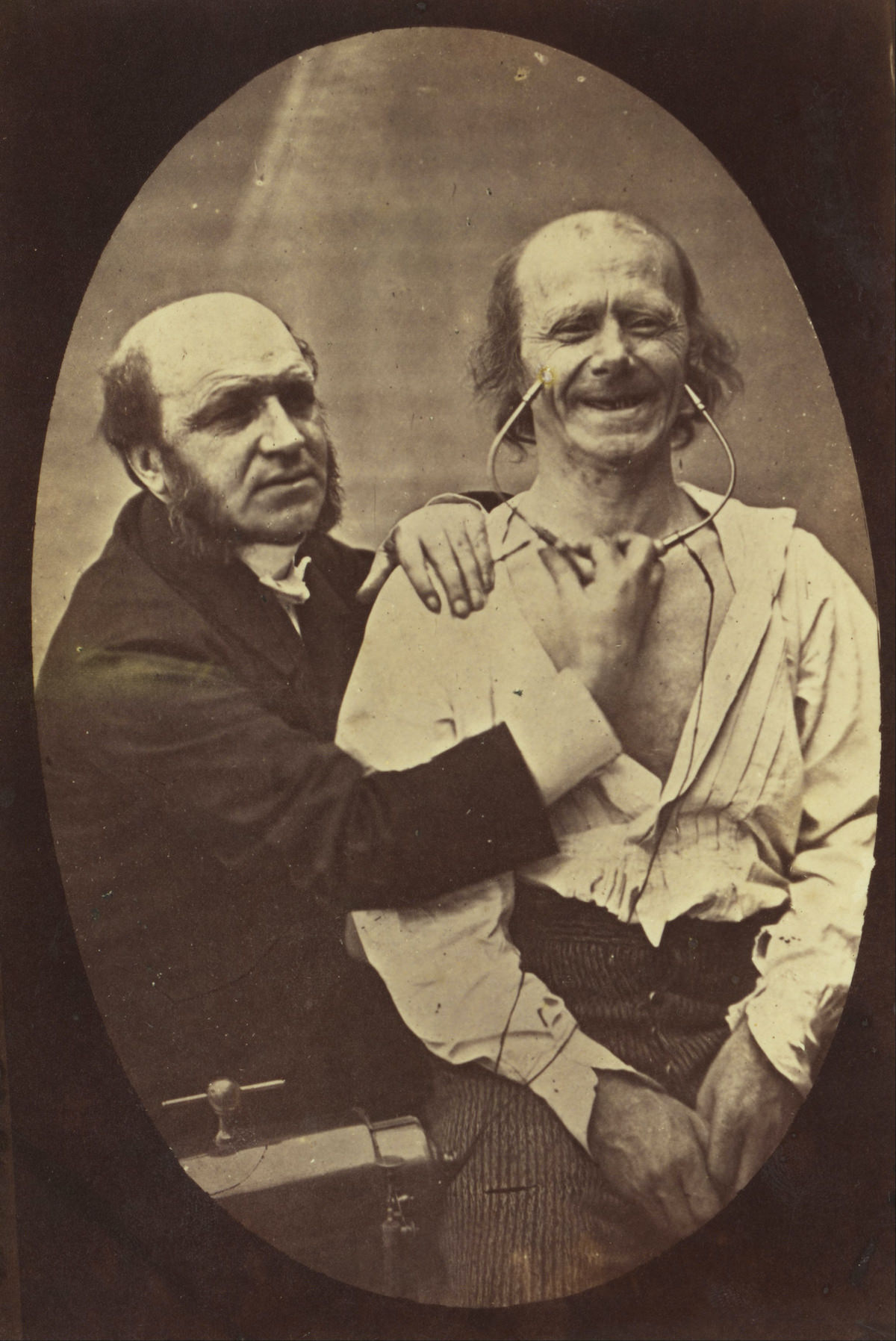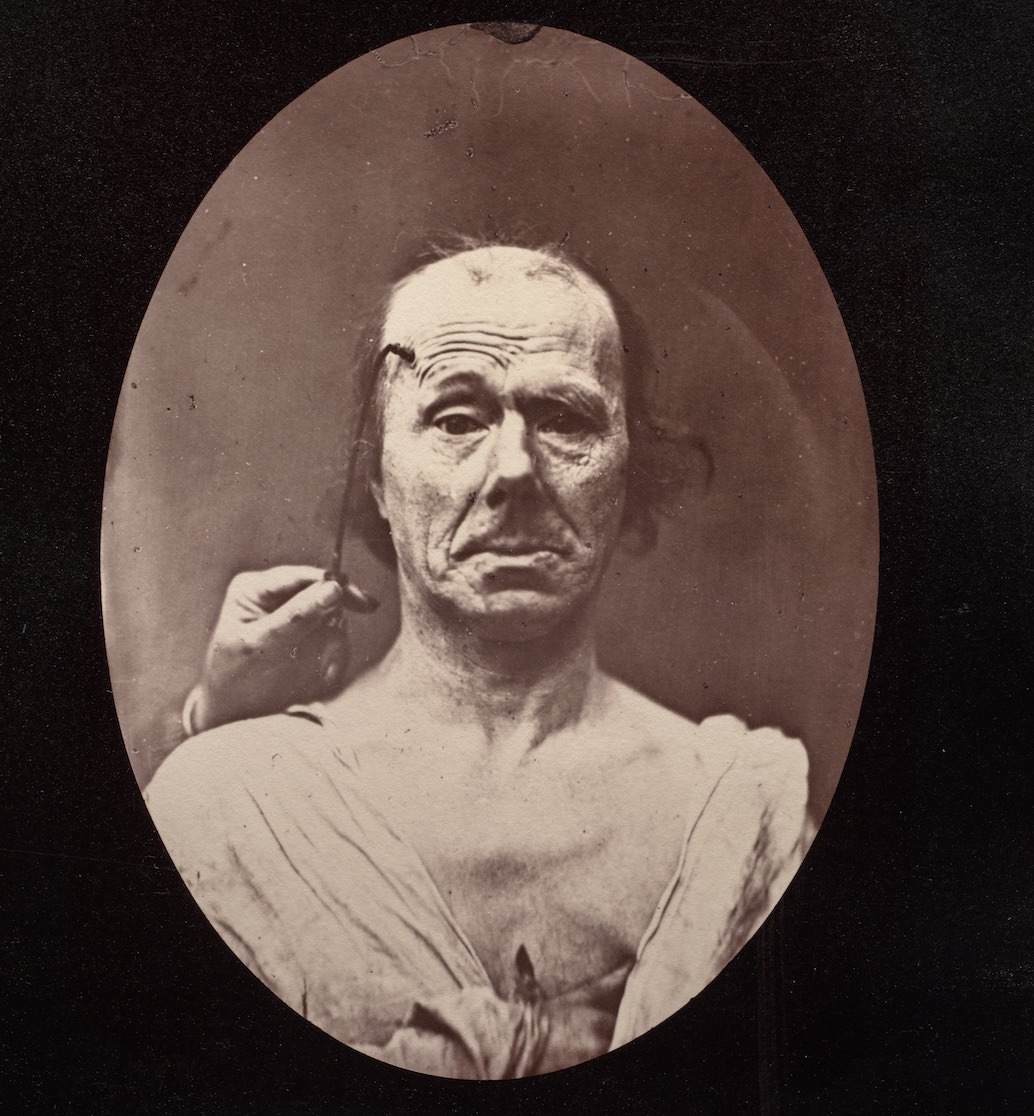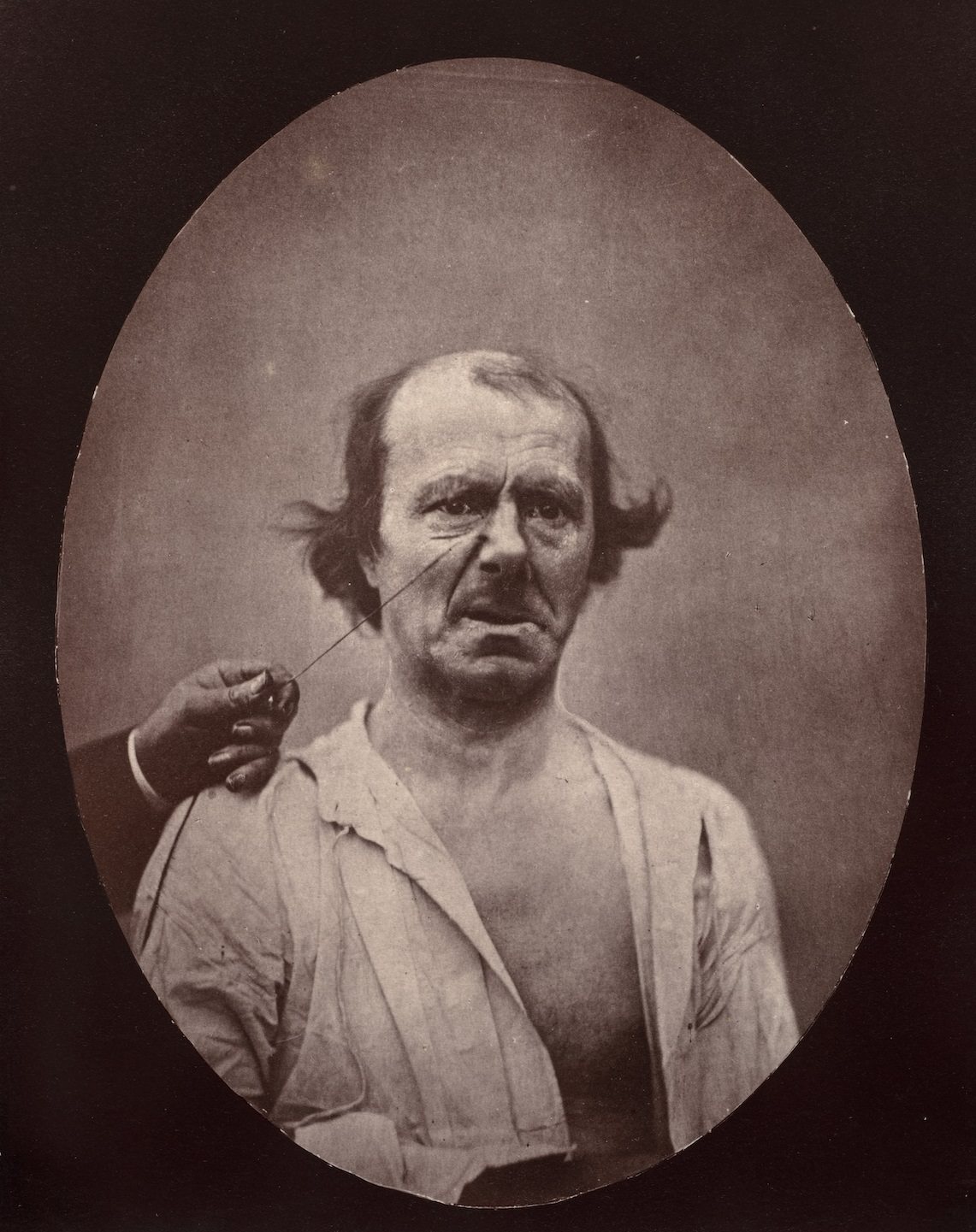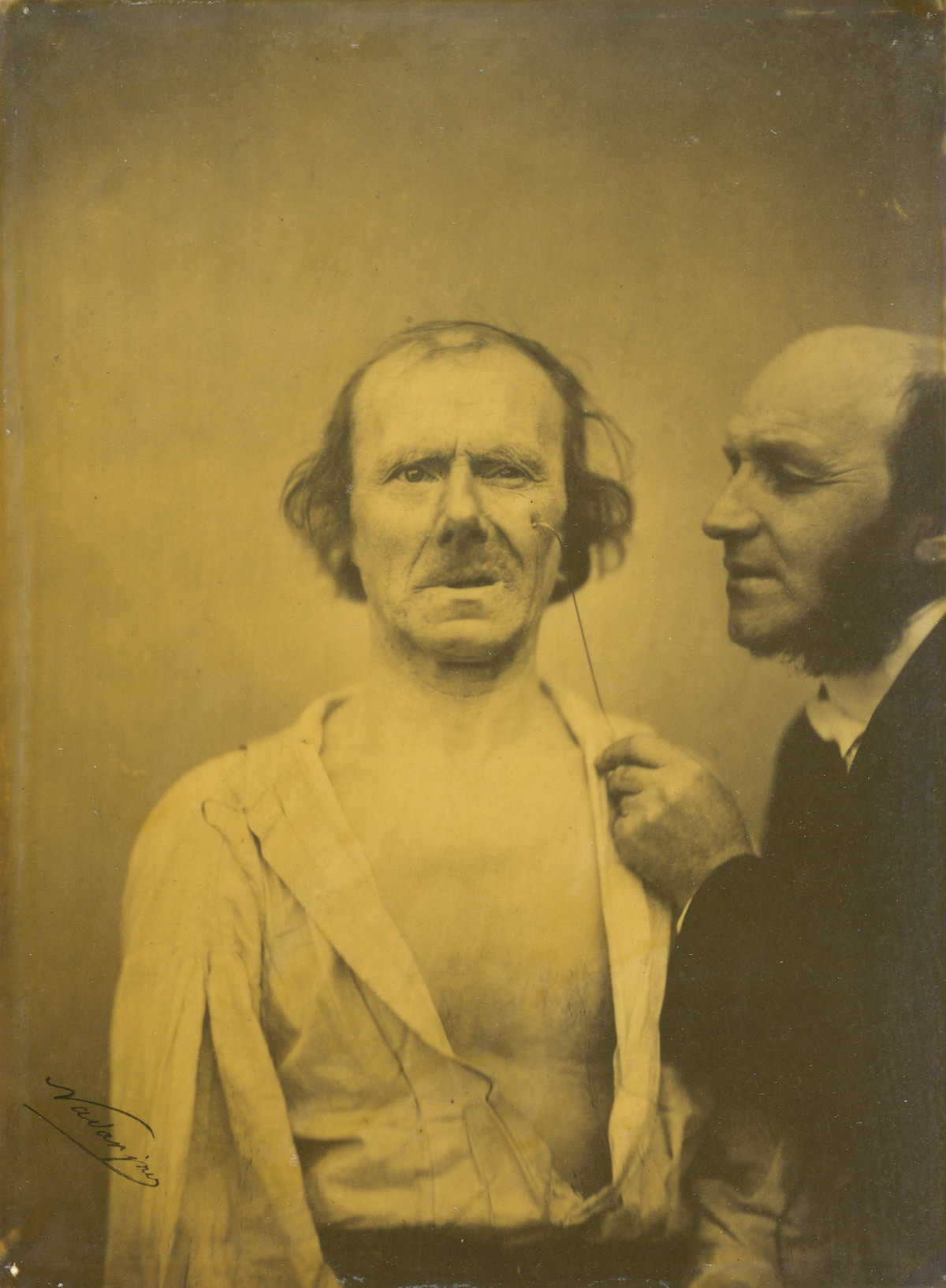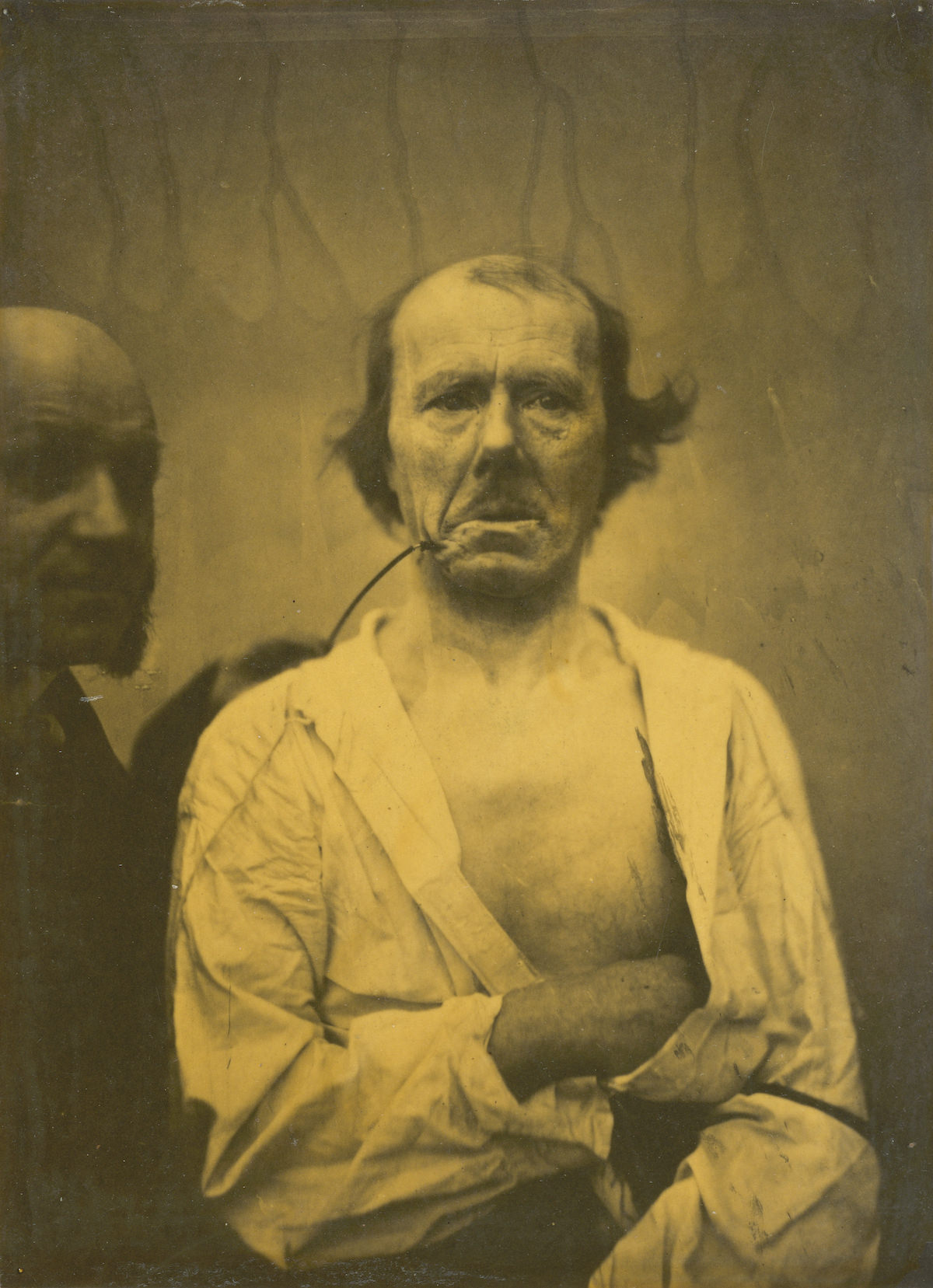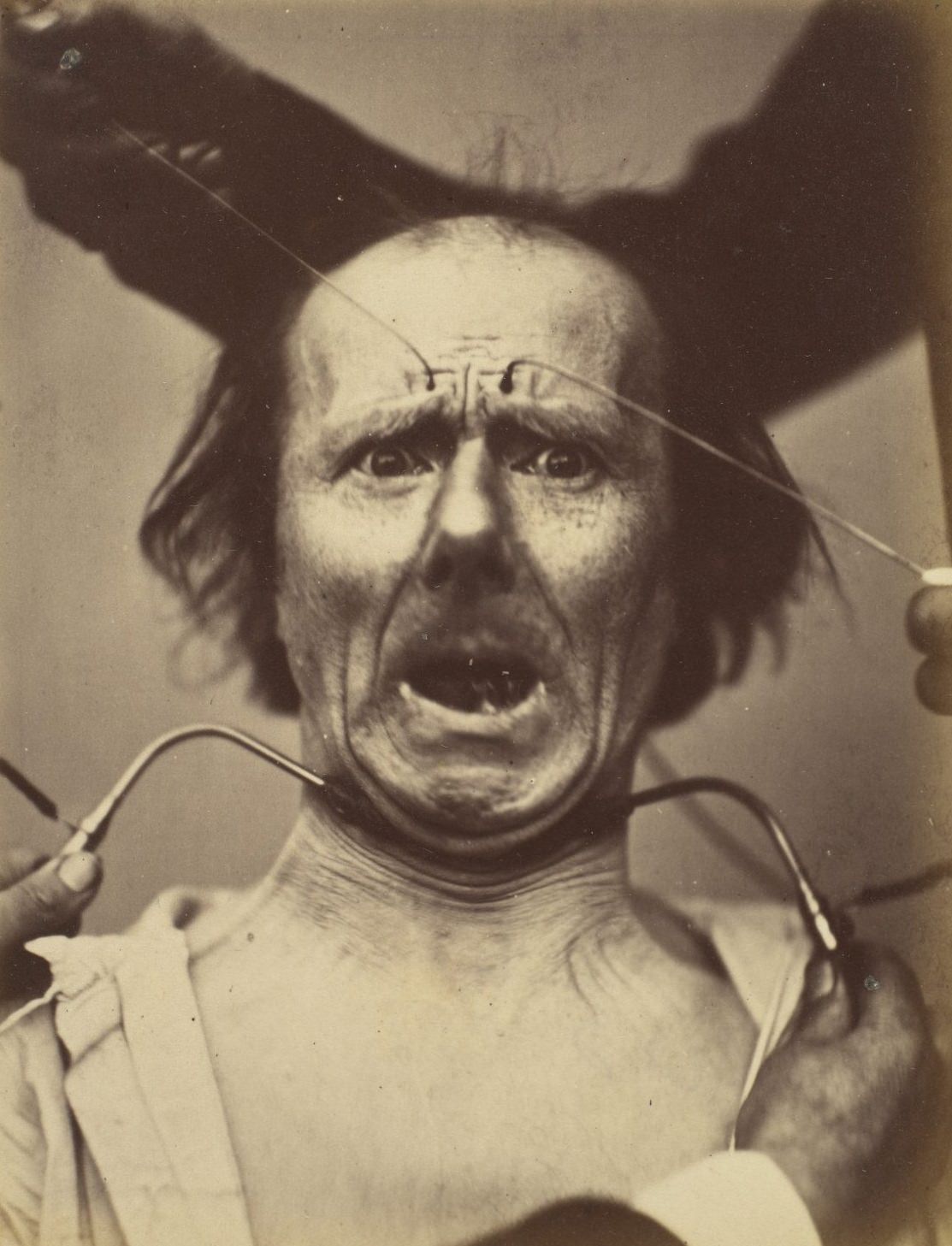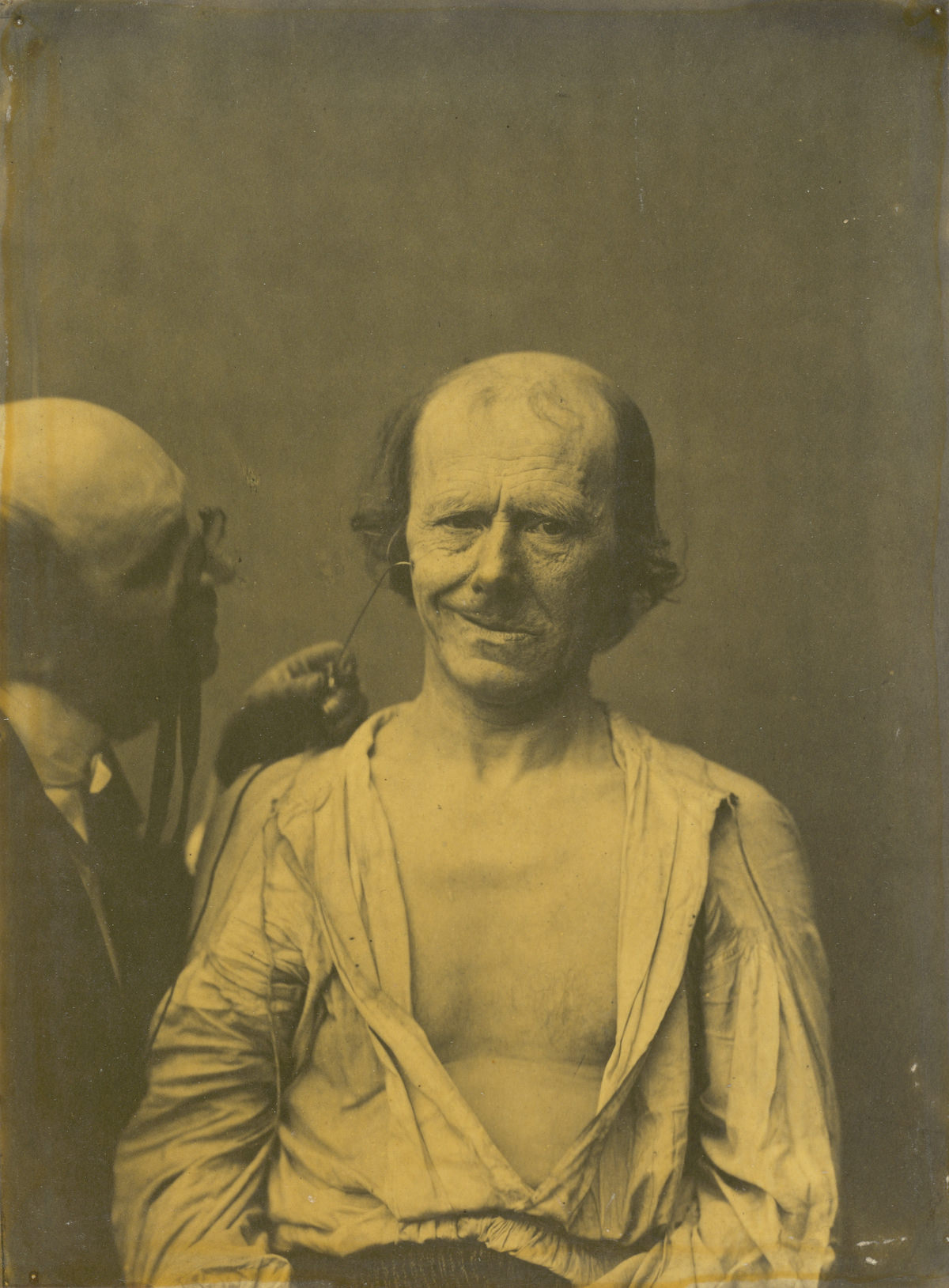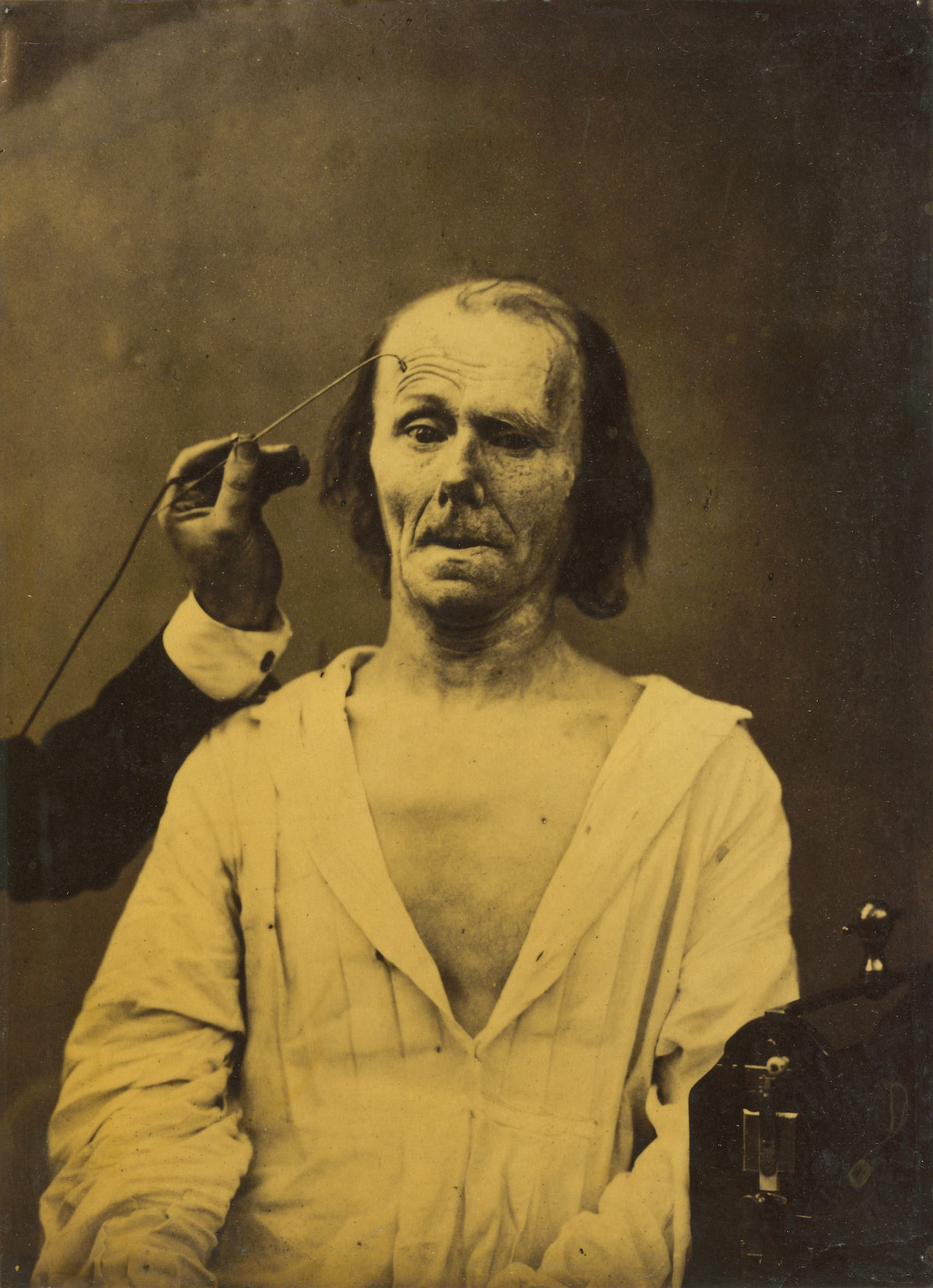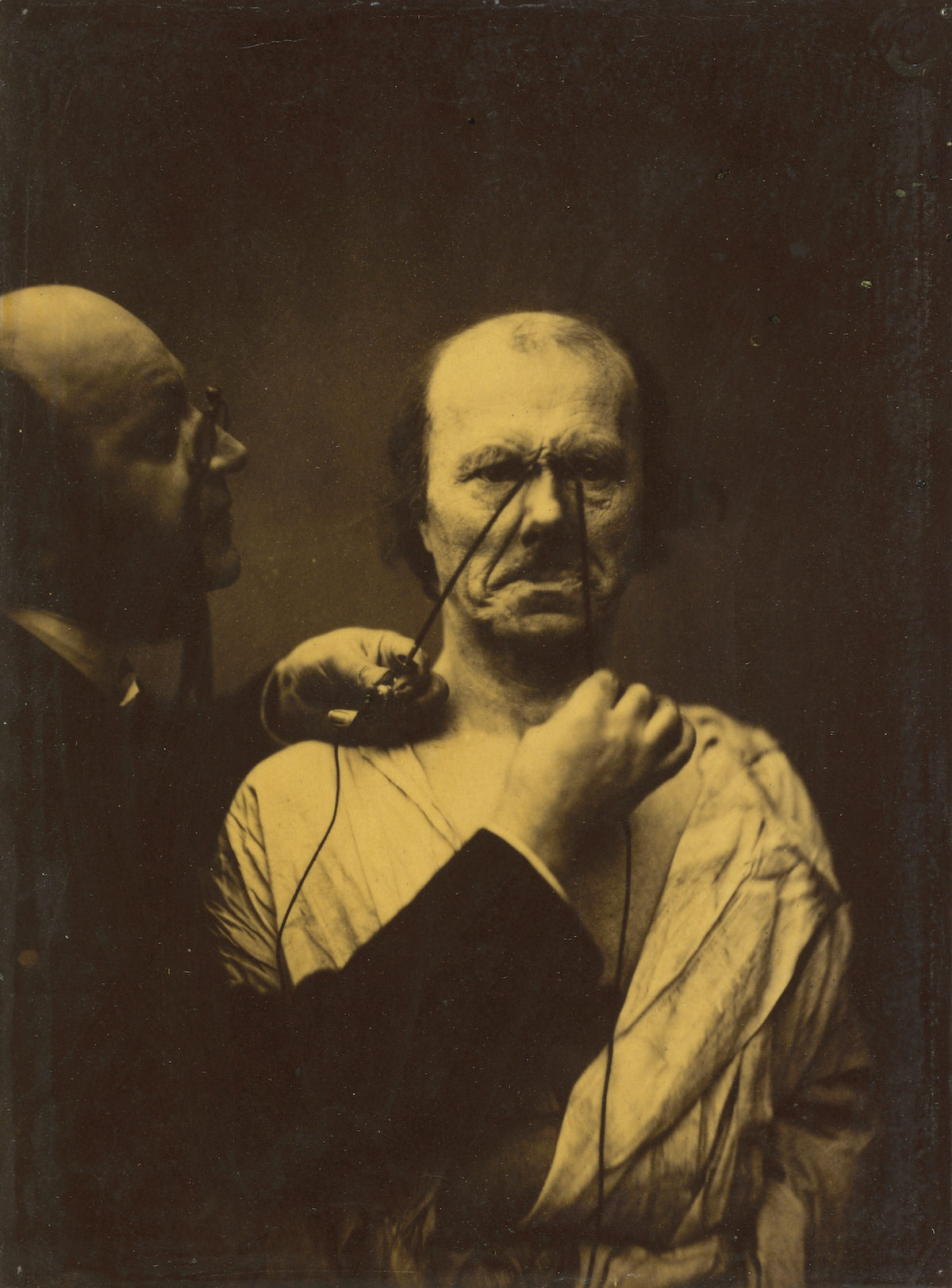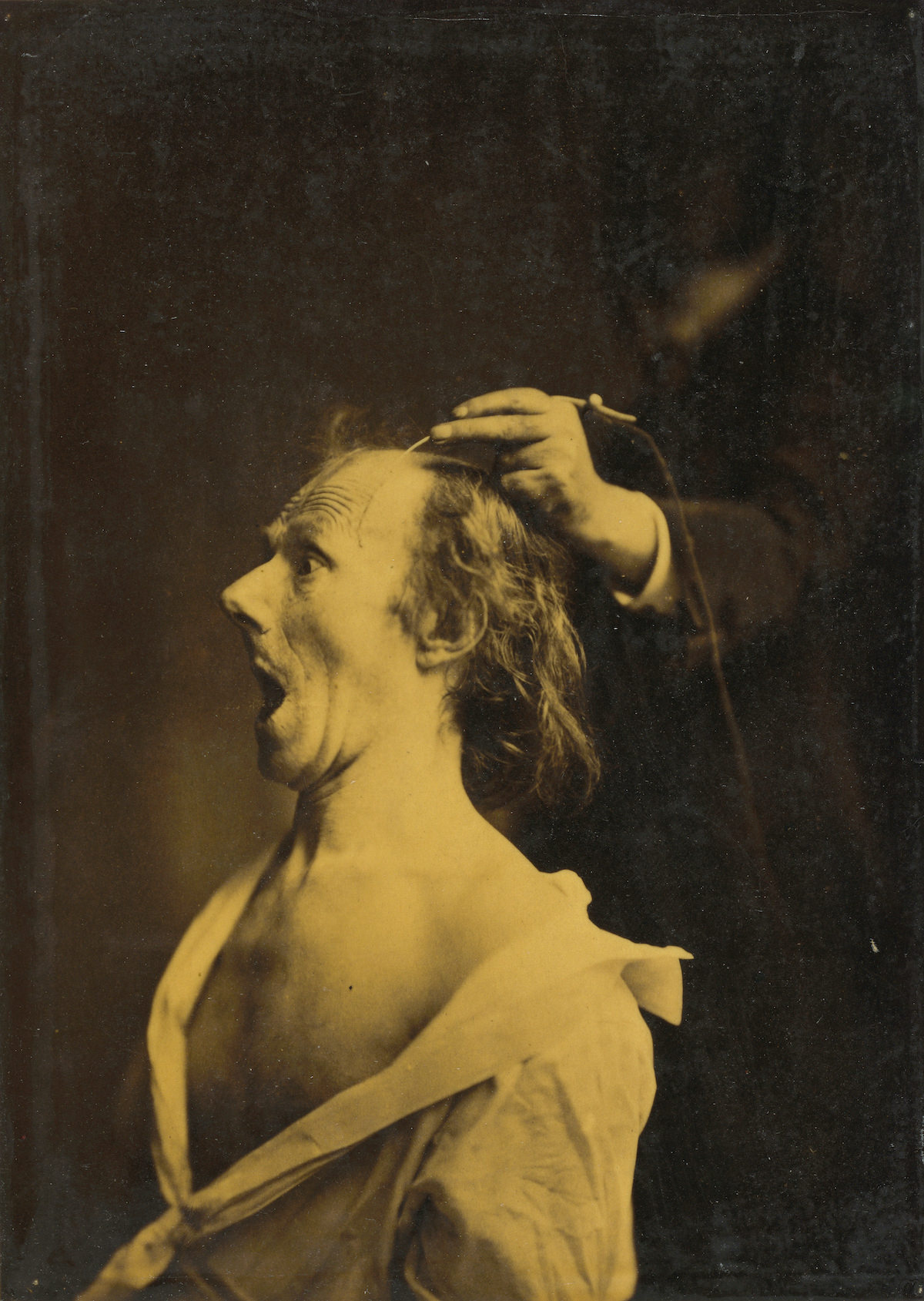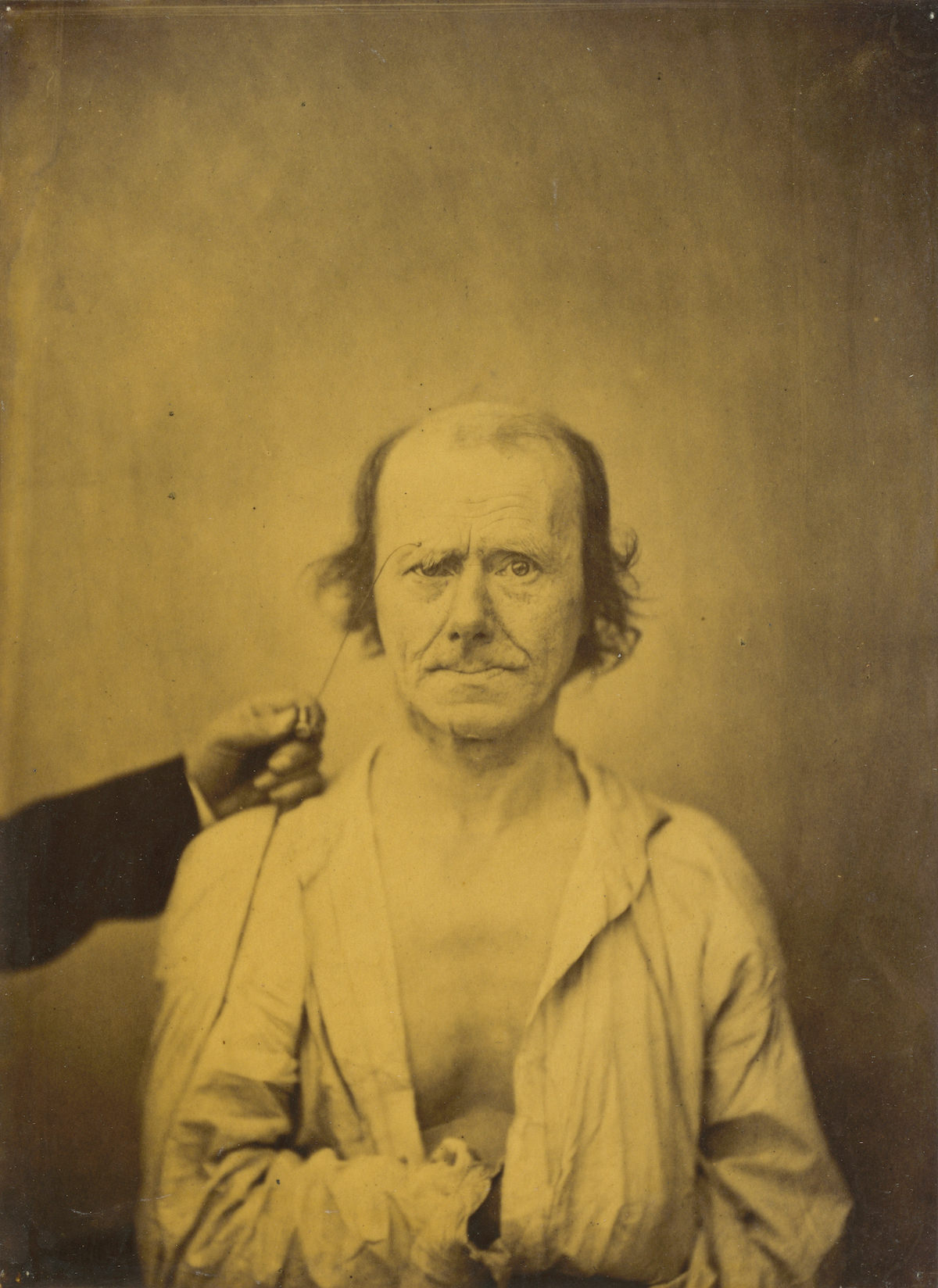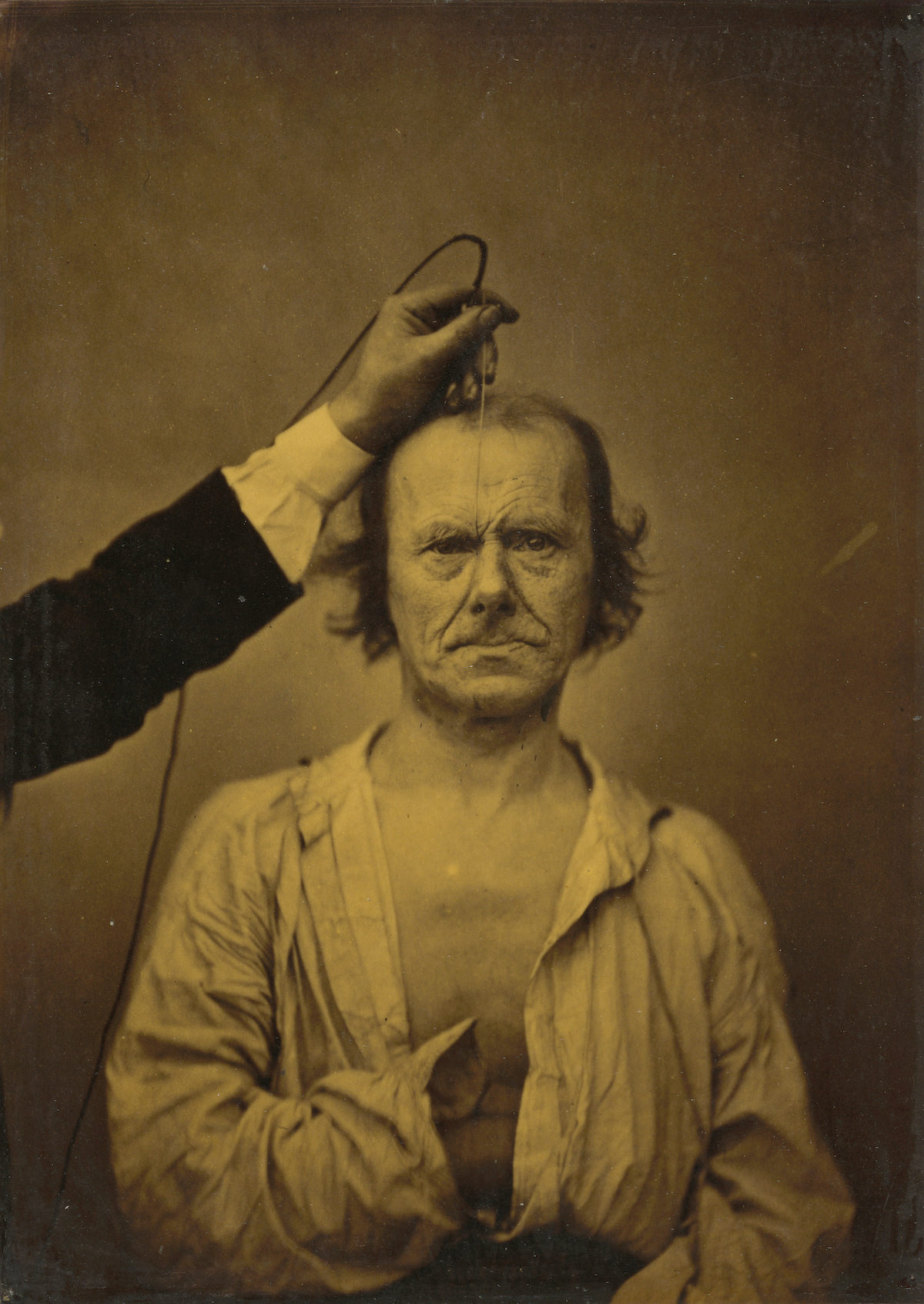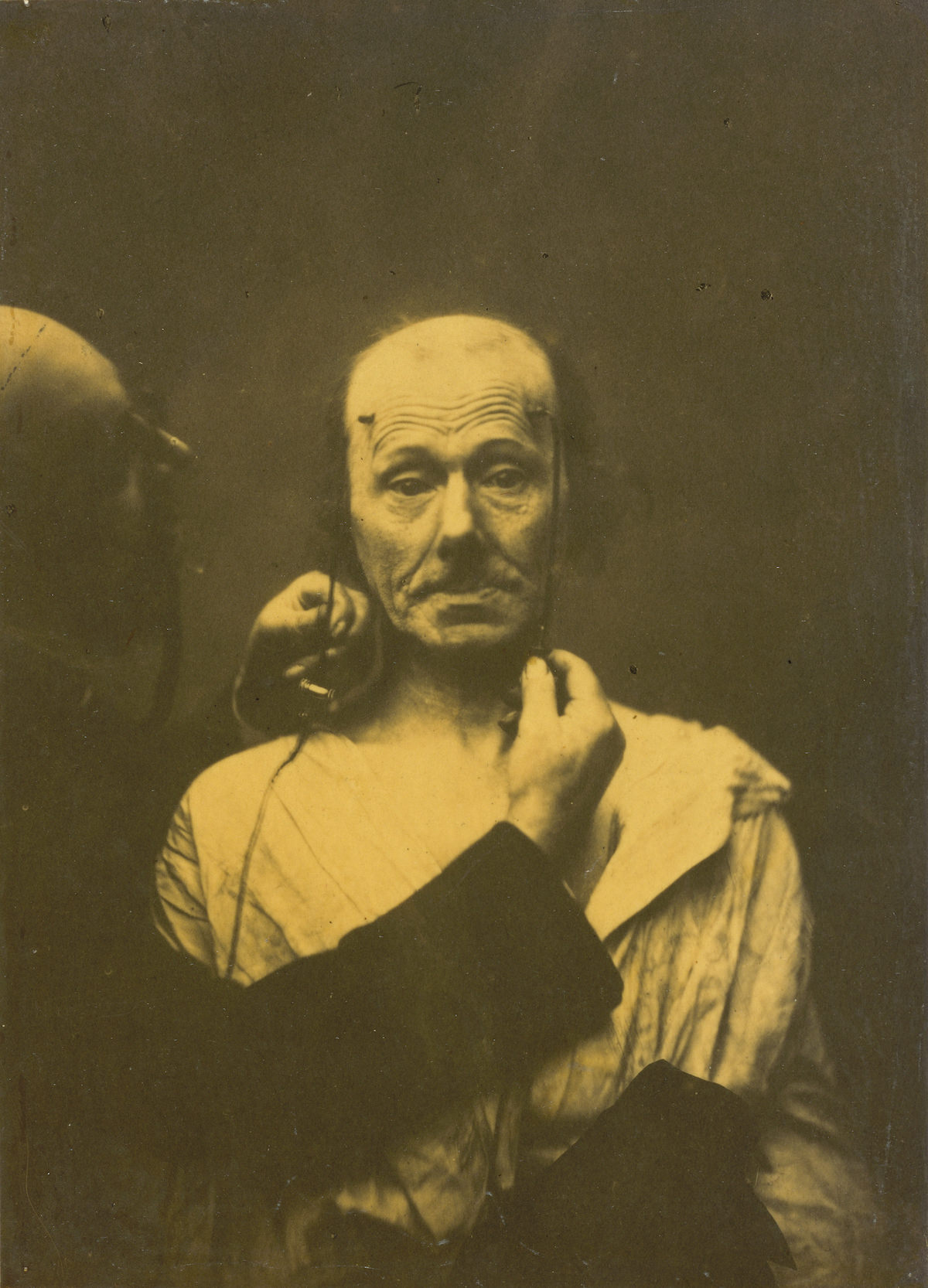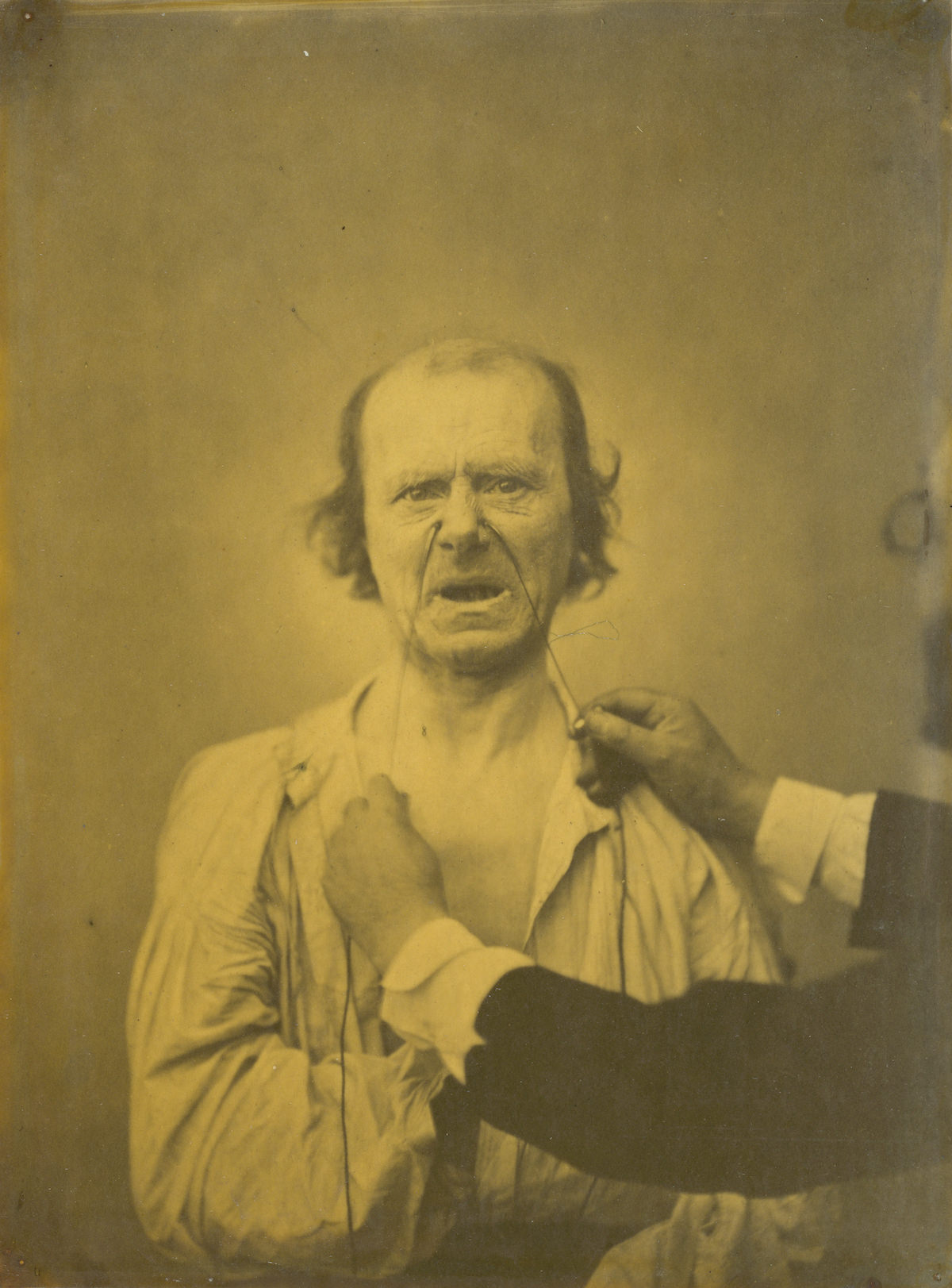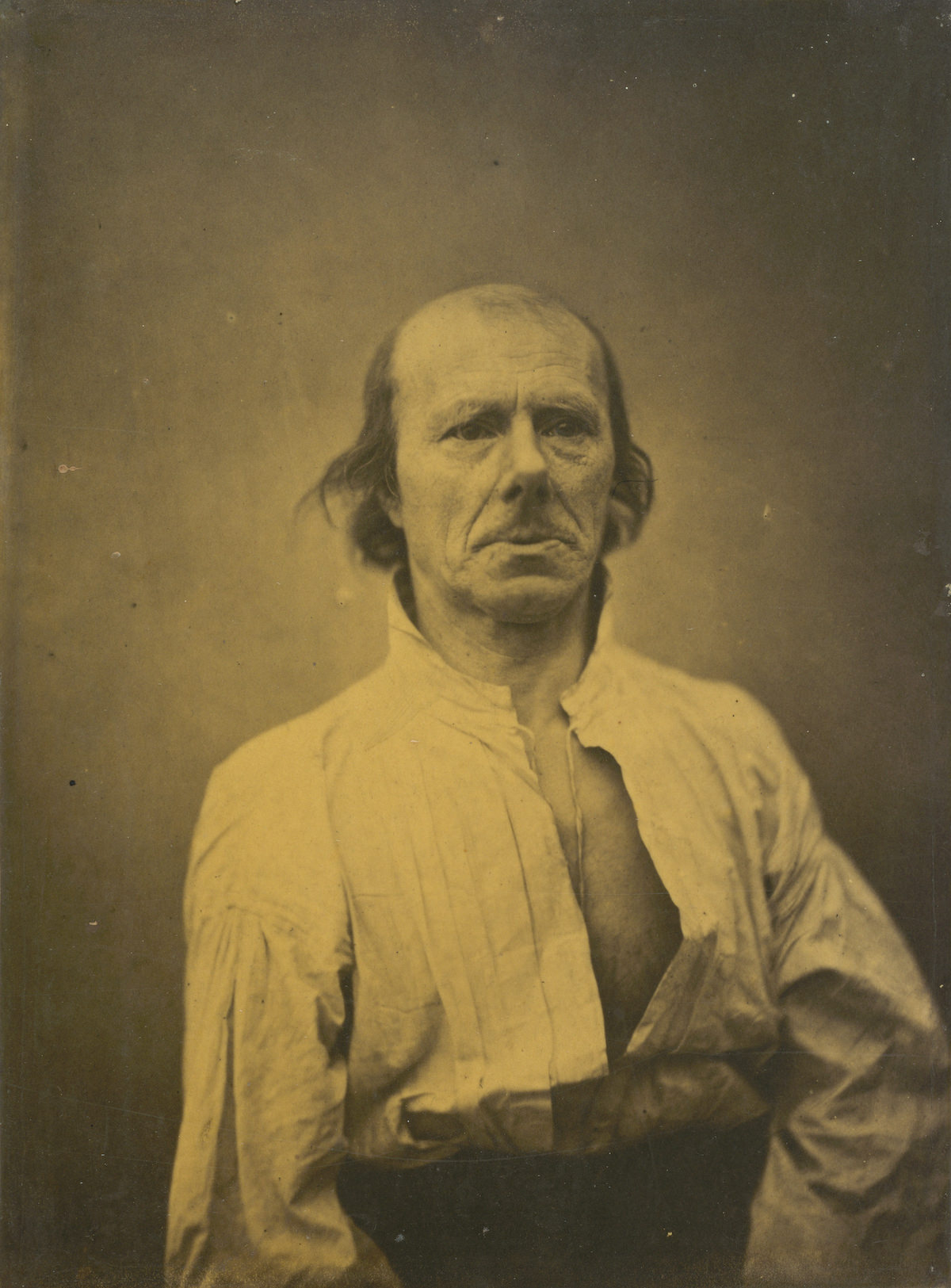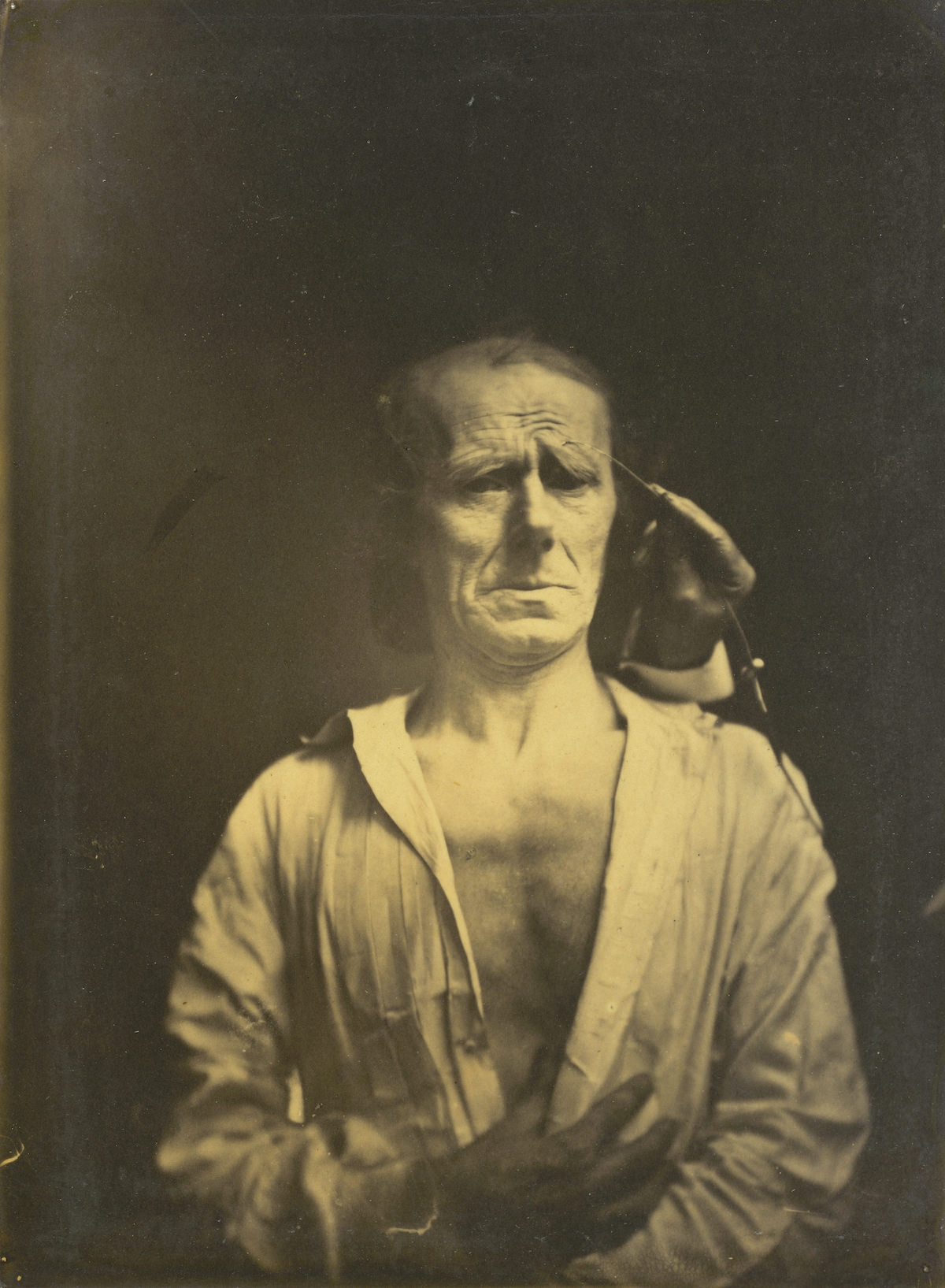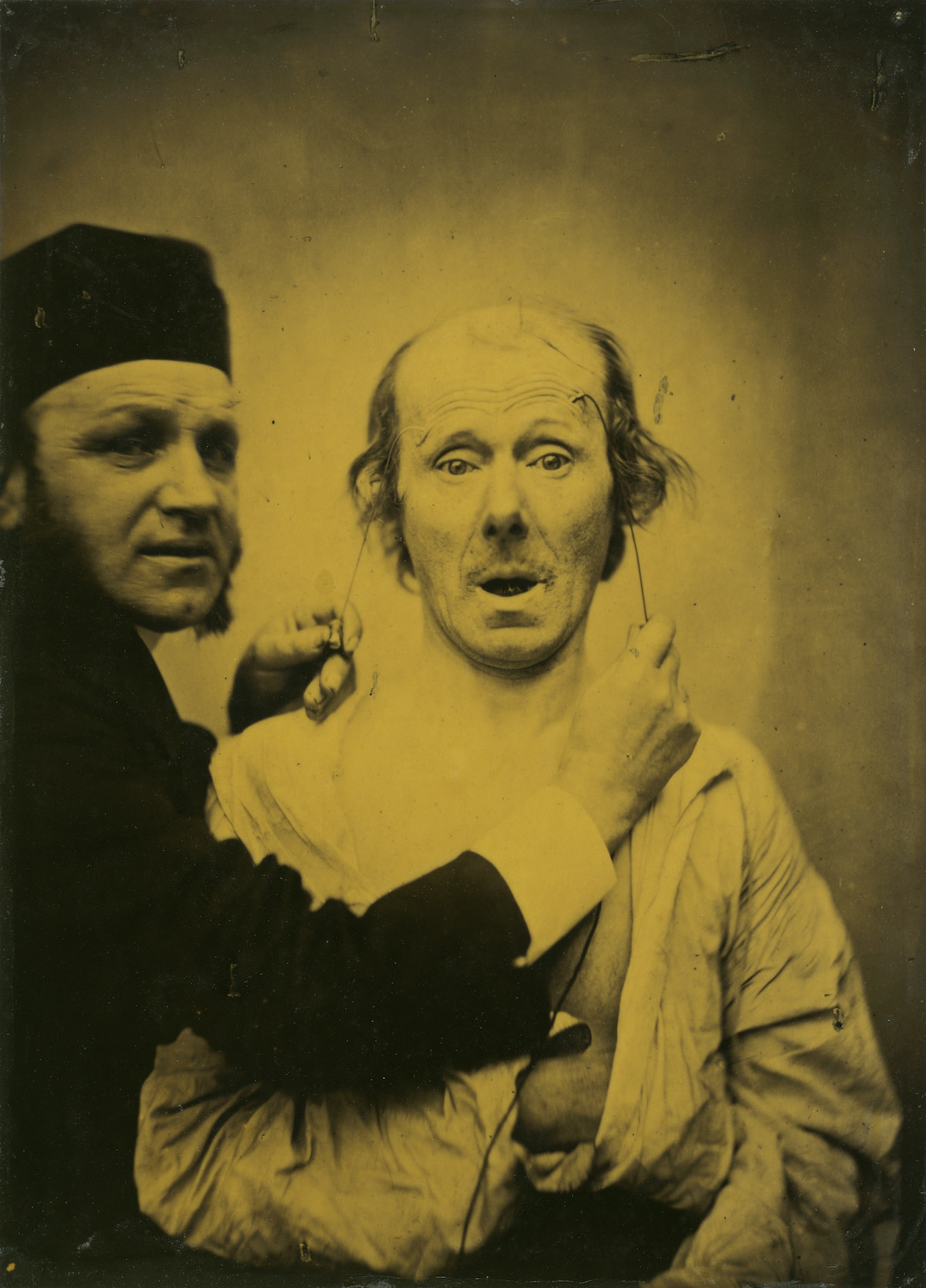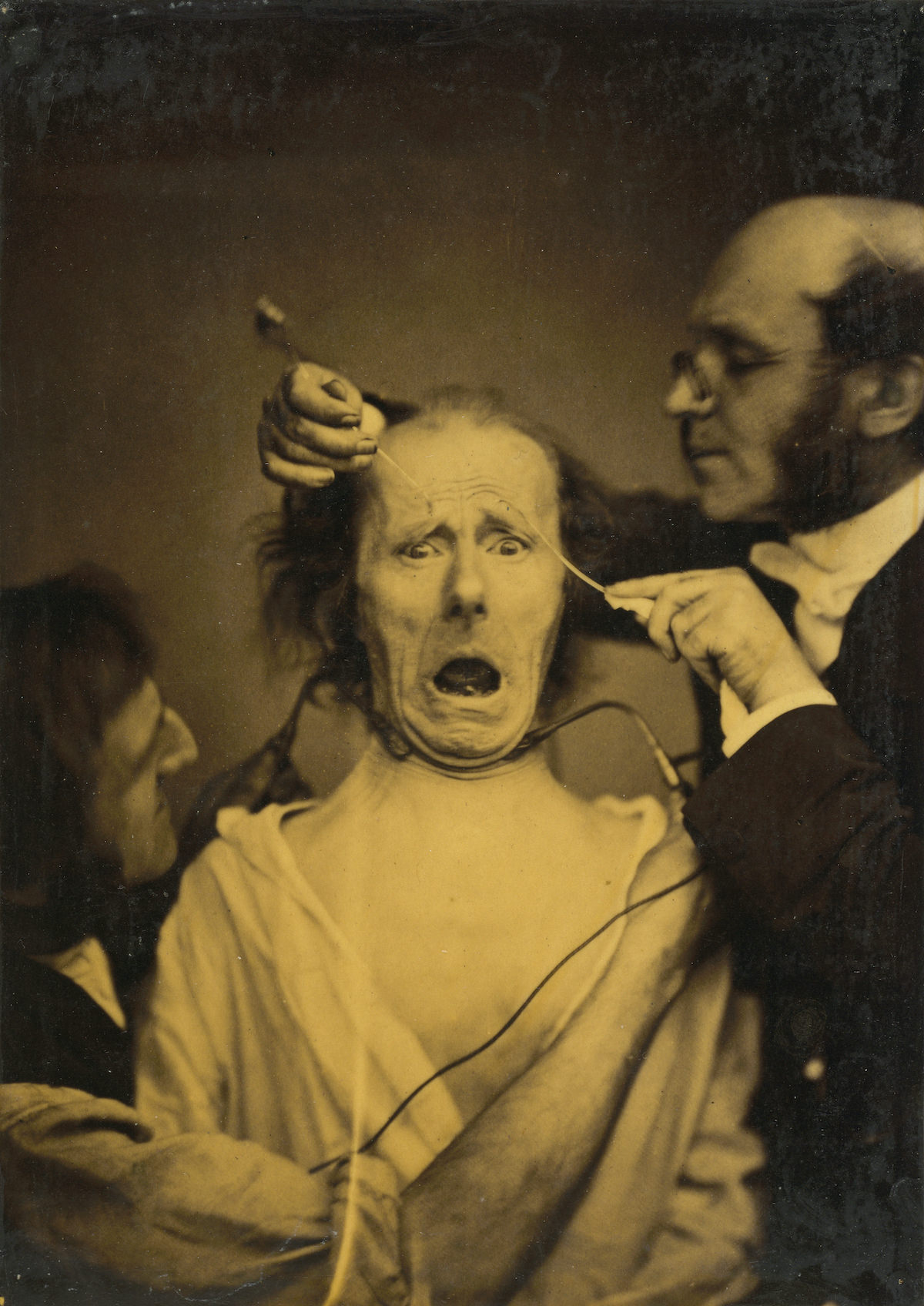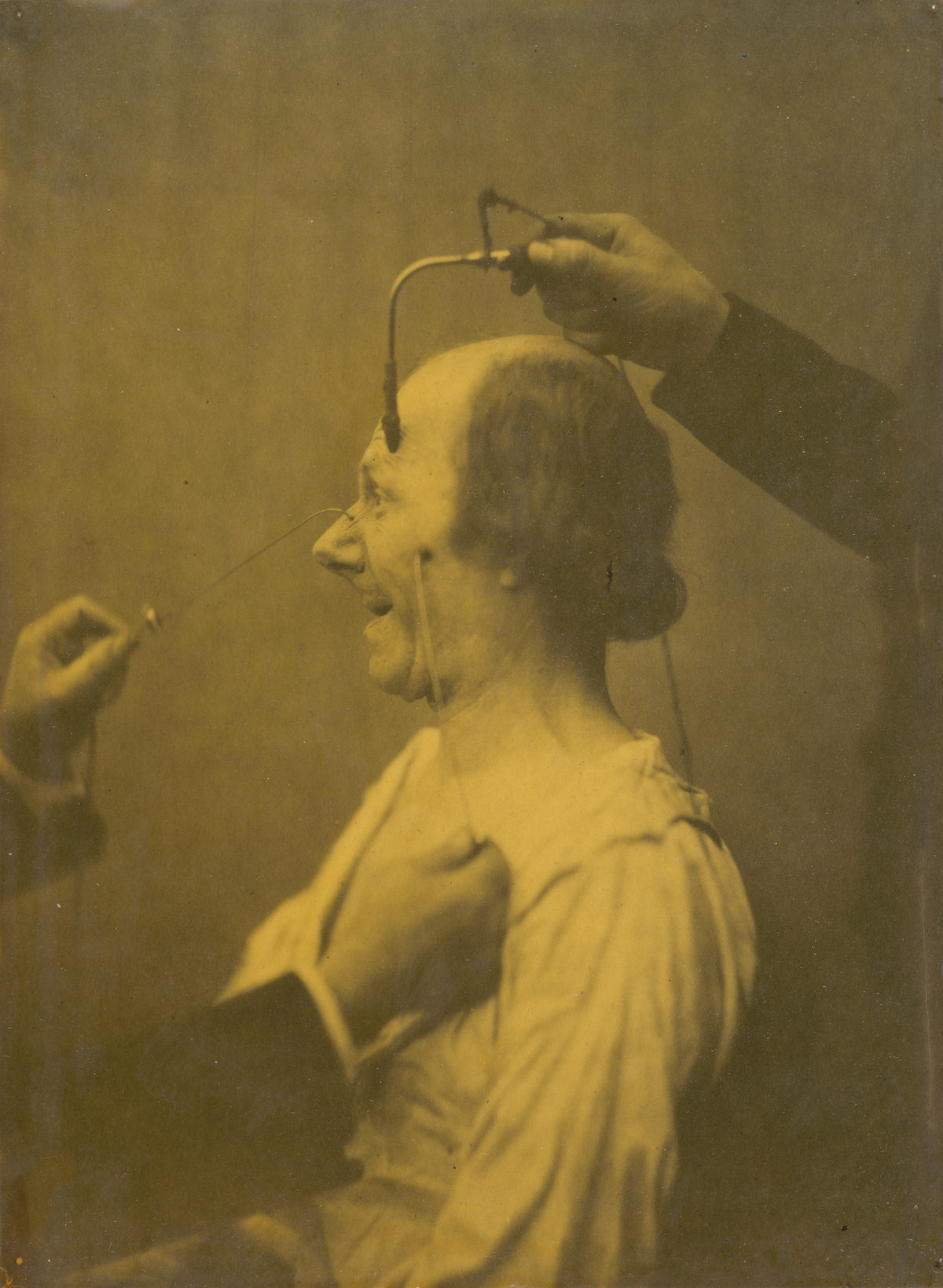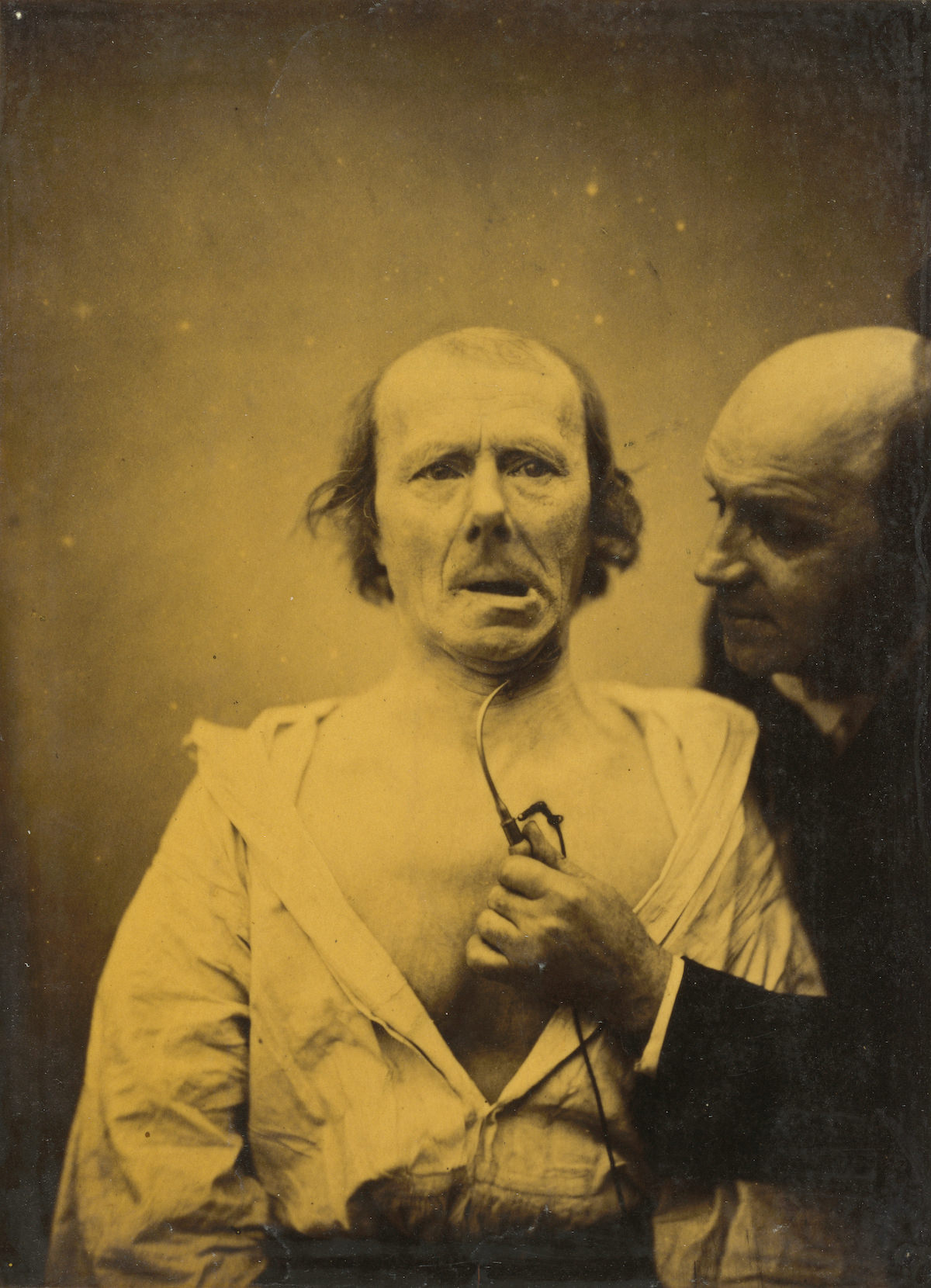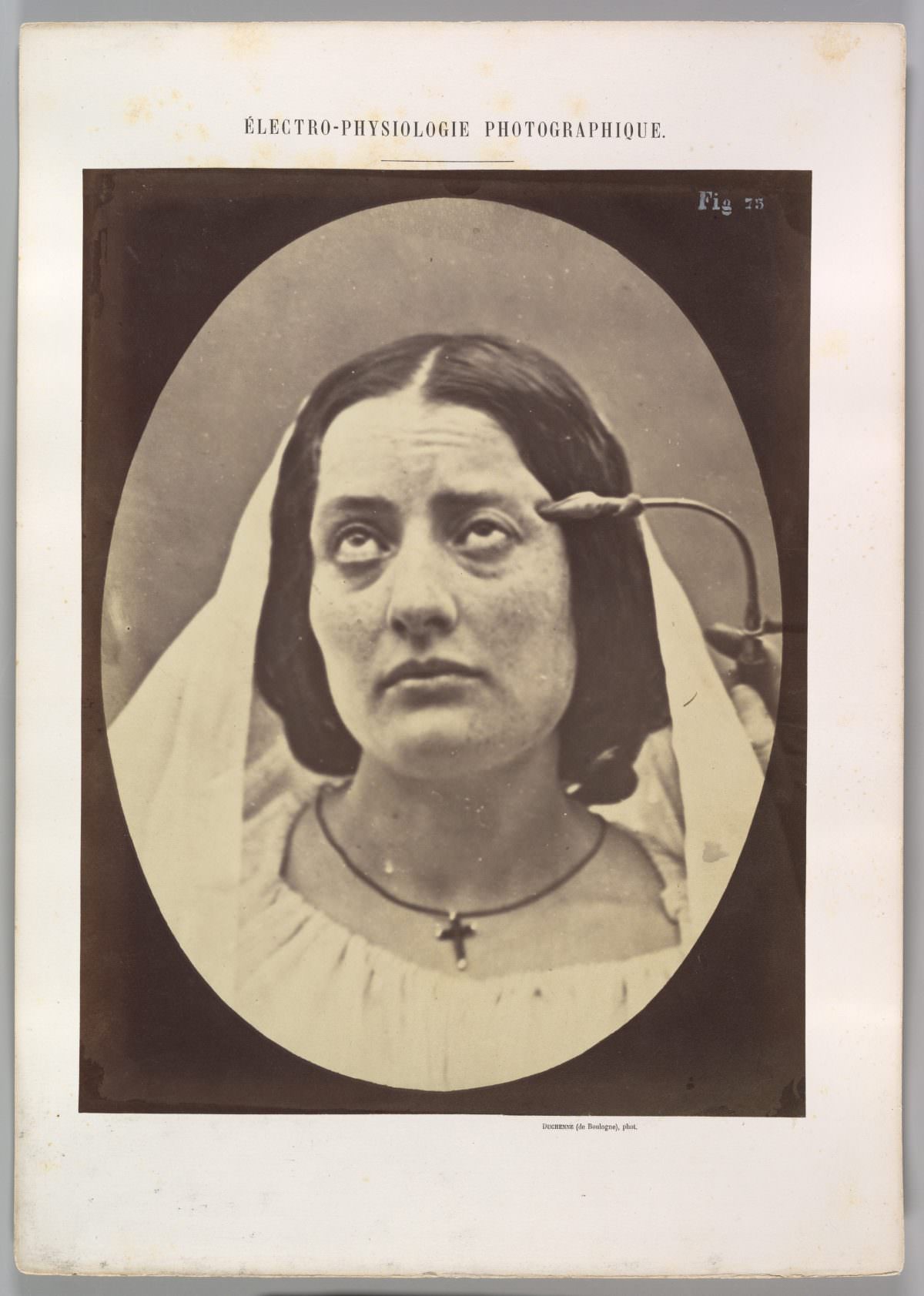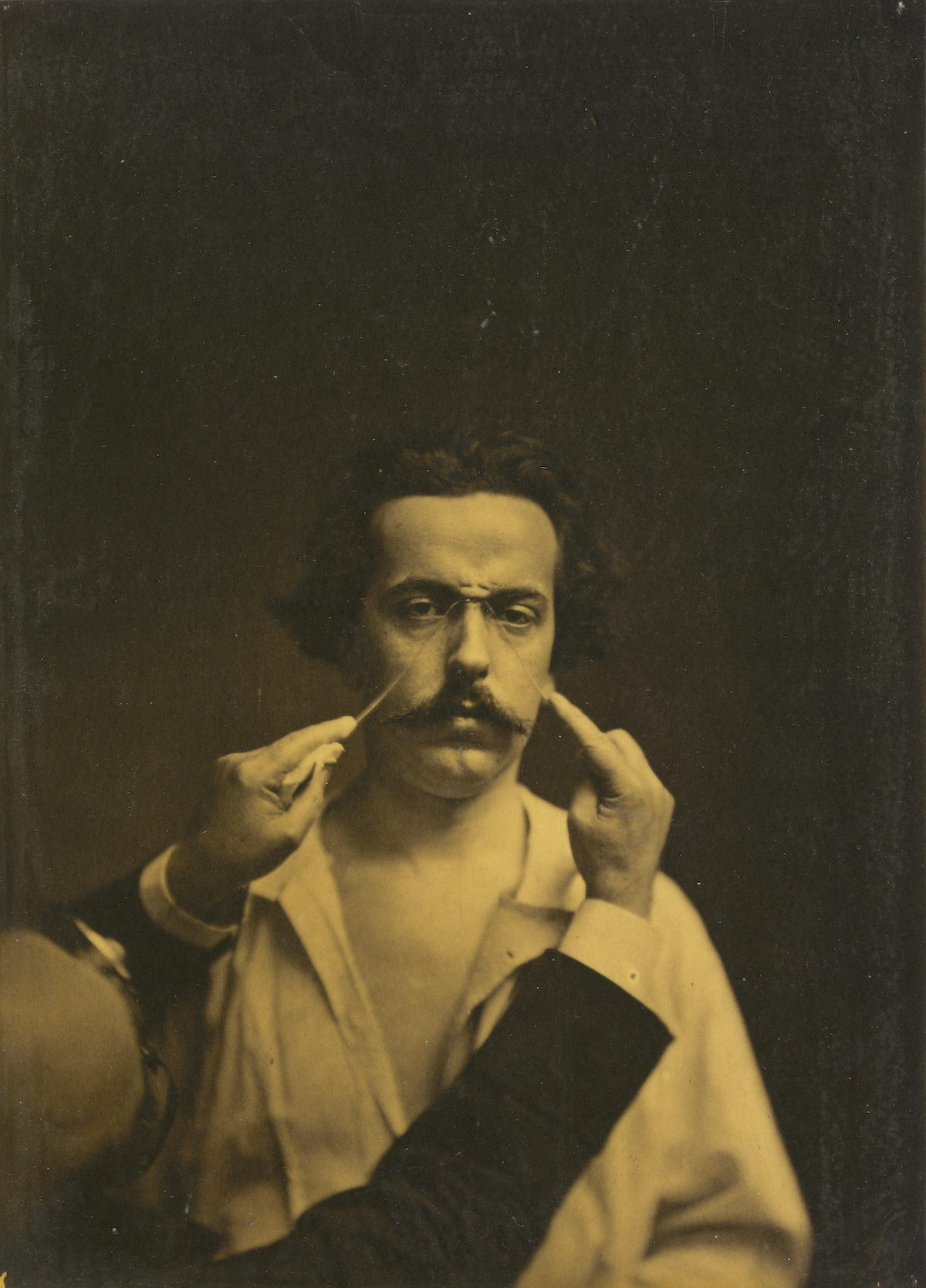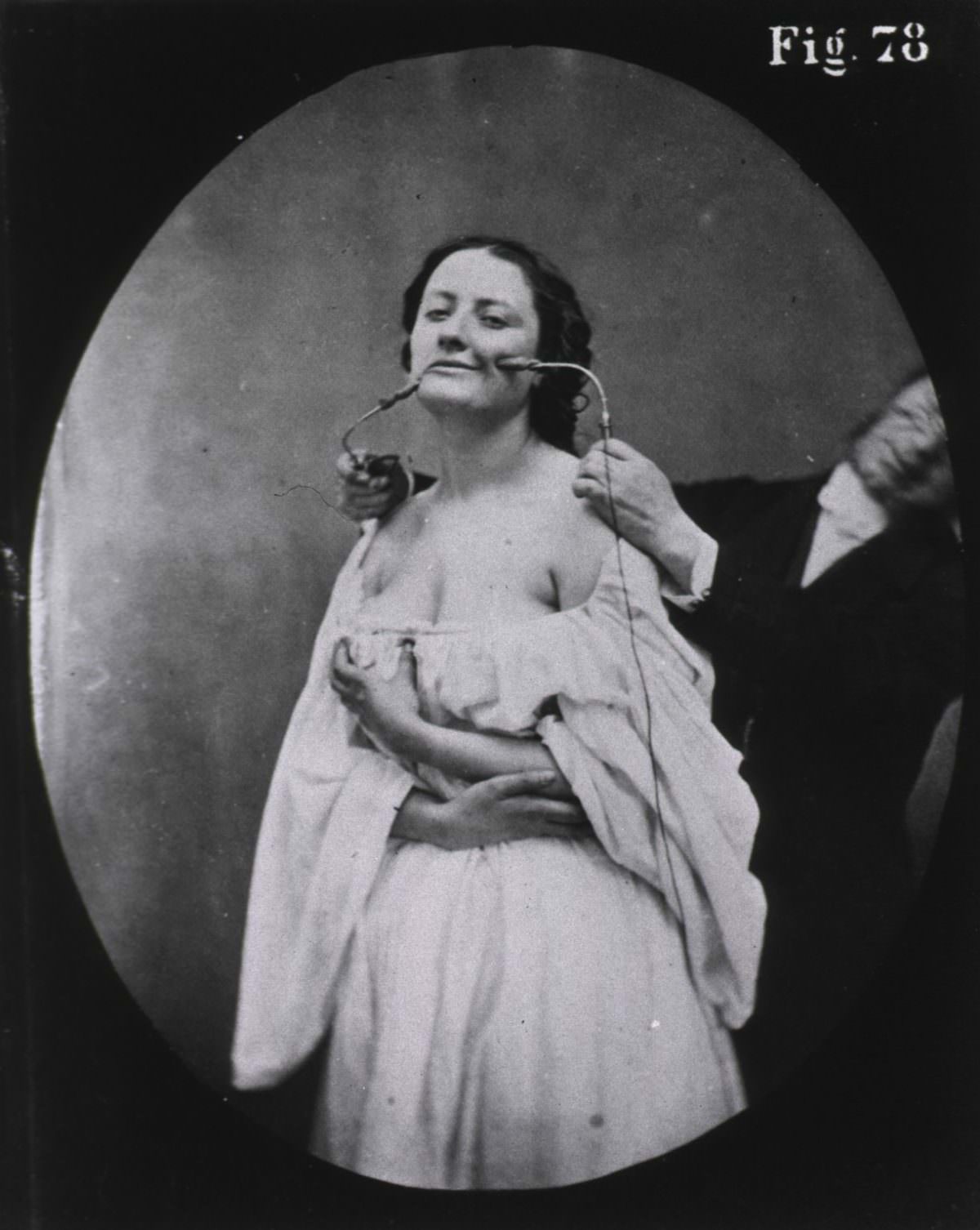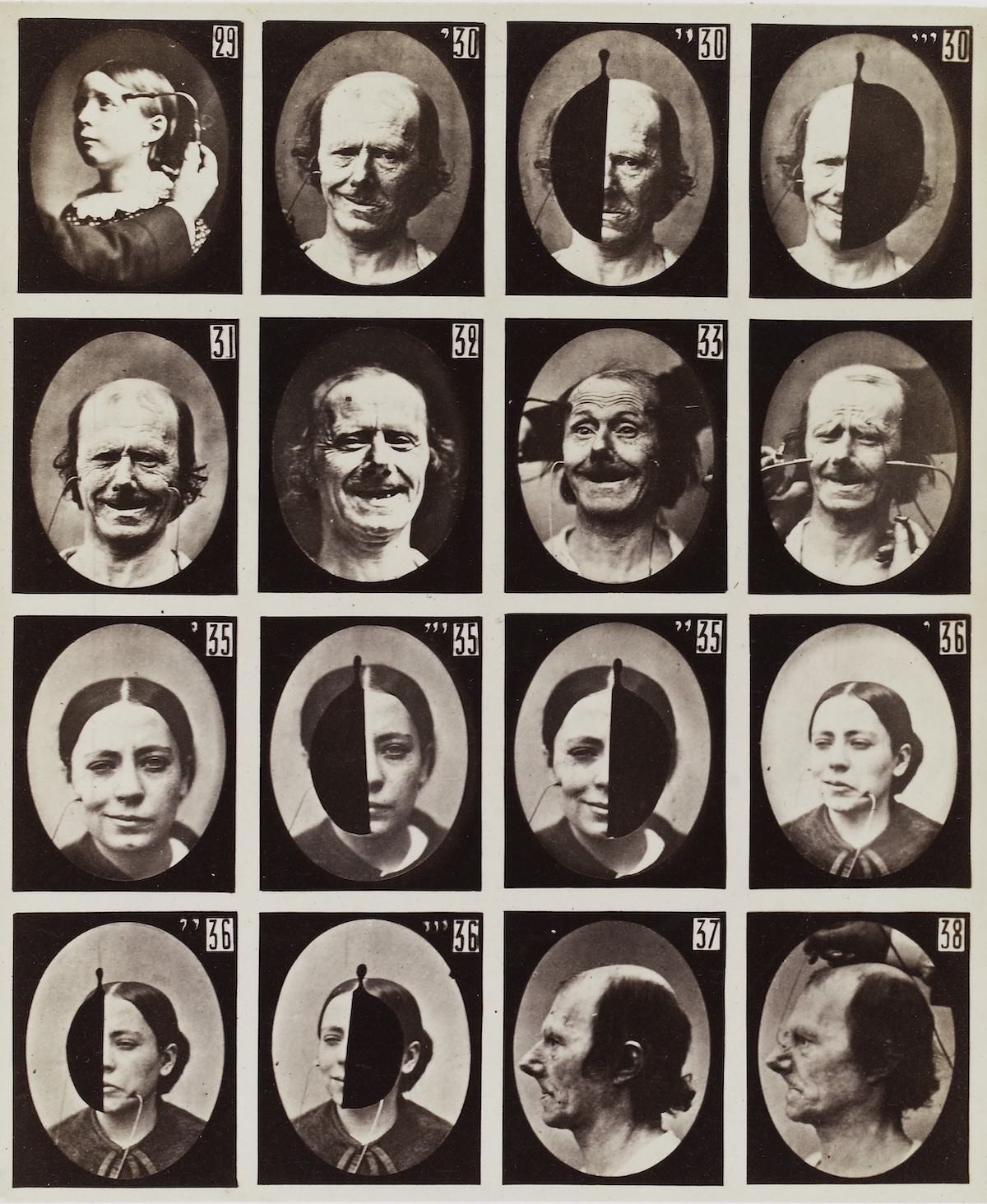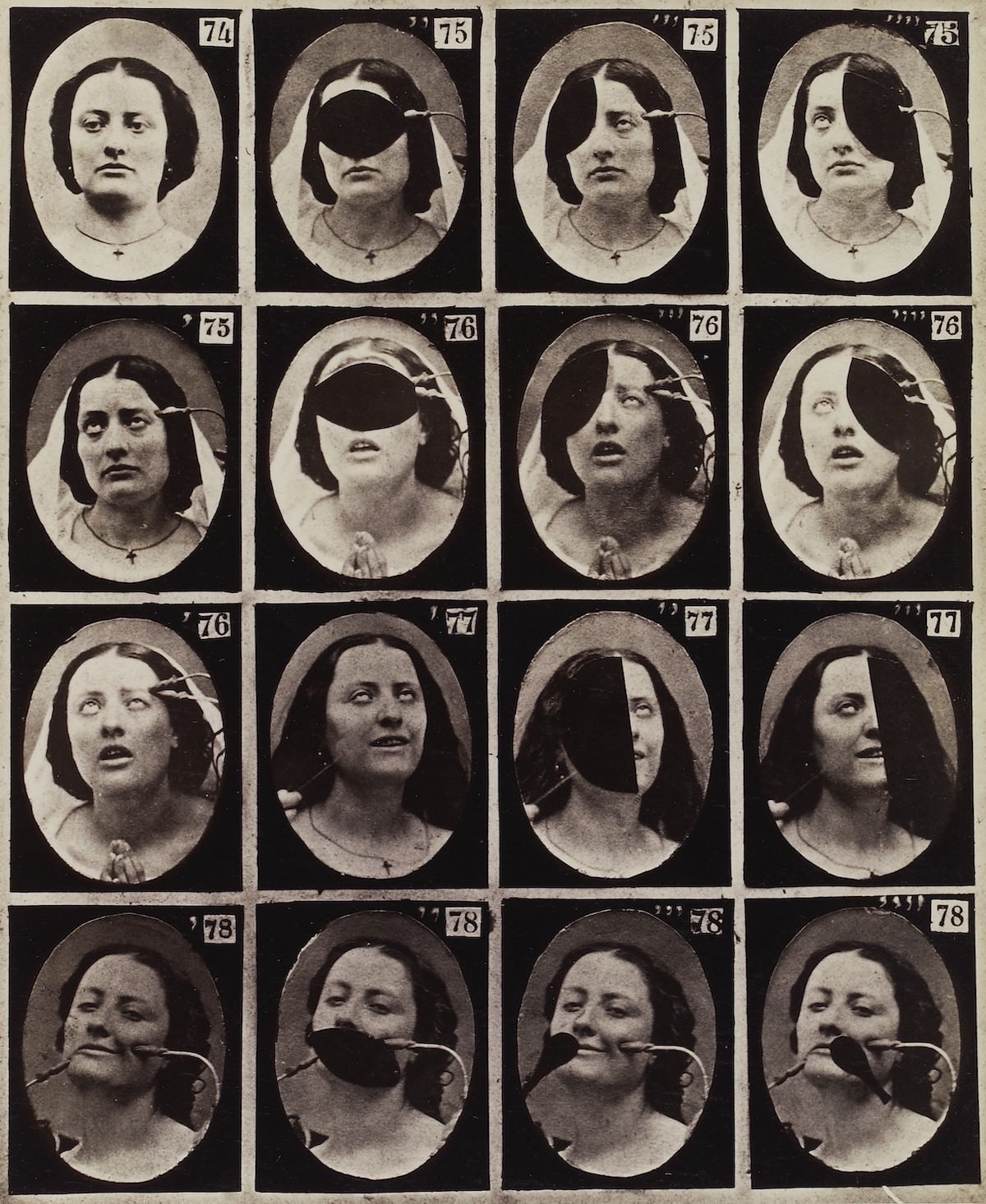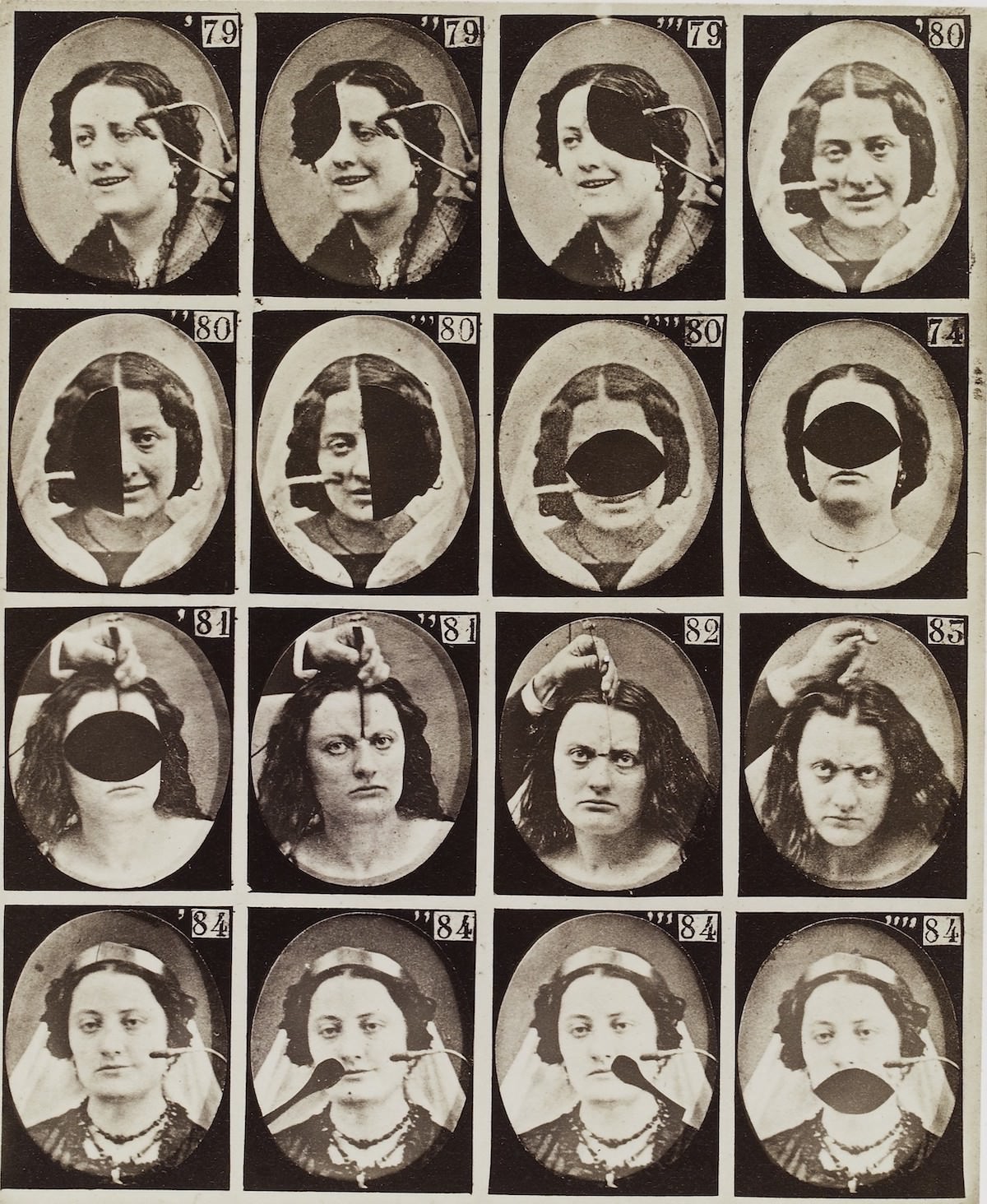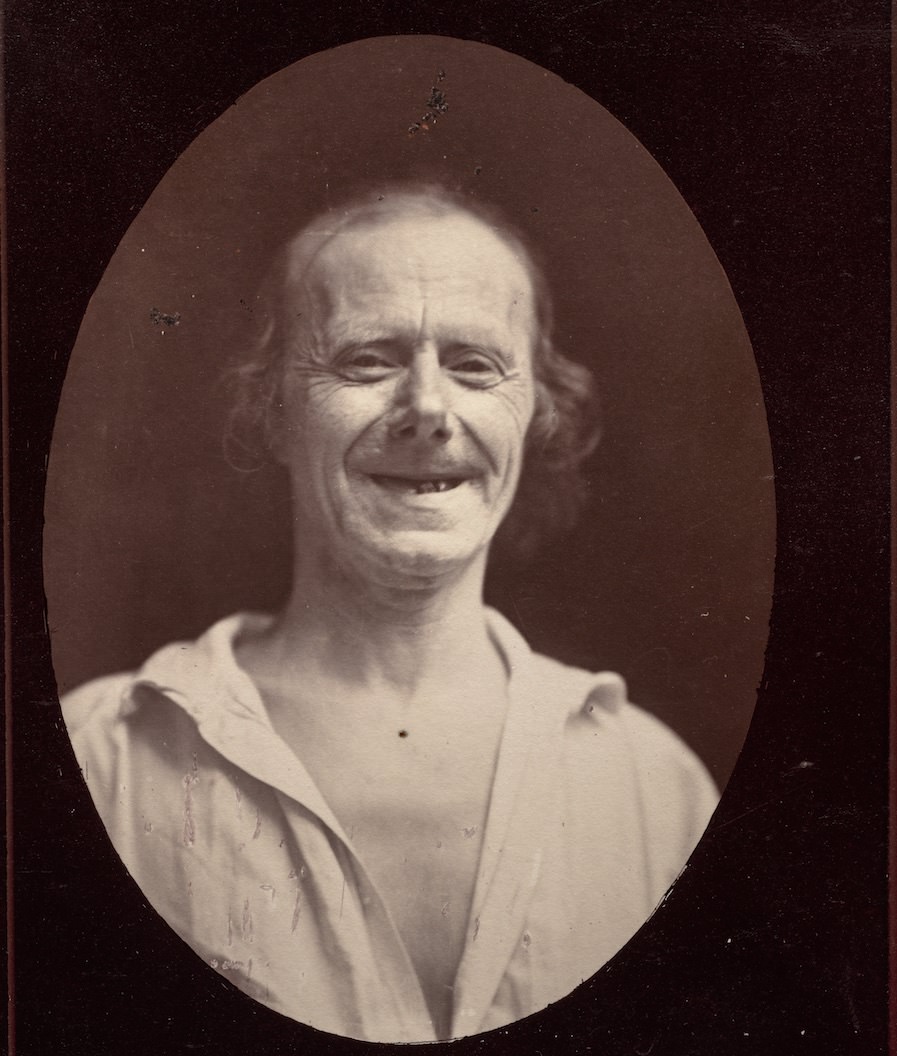The Mechanism of Human Physiognomy by Guillaume-Benjamin-Amand Duchenne de Boulogne is a book published in 1862 that describes the science of physiognomy, which is the study of the relationship between a person’s outward appearance and their character or personality. The book presents Duchenne’s theories and research on the subject and includes illustrations and descriptions of the various facial expressions and their associated psychological states. In the book, Duchenne discusses the different muscles of the face and how they work together to produce different expressions, and presents his research on the physiological basis of emotions and their corresponding facial expressions. He also includes numerous illustrations and photographs to demonstrate his theories and findings. The book was widely read and influential in its time, and remains an important work in the history of physiognomy and the science of facial expressions.
Duchenne writes:
In the face our creator was not concerned with mechanical necessity. He was able in his wisdom or – please pardon this manner of speaking – in pursuing a divine fantasy … to put any particular muscles into action, one alone or several muscles together, when He wished the characteristic signs of the emotions, even the most fleeting, to be written briefly on man’s face. Once this language of facial expression was created, it sufficed for Him to give all human beings the instinctive faculty of always expressing their sentiments by contracting the same muscles. This rendered the language universal and immutable.


